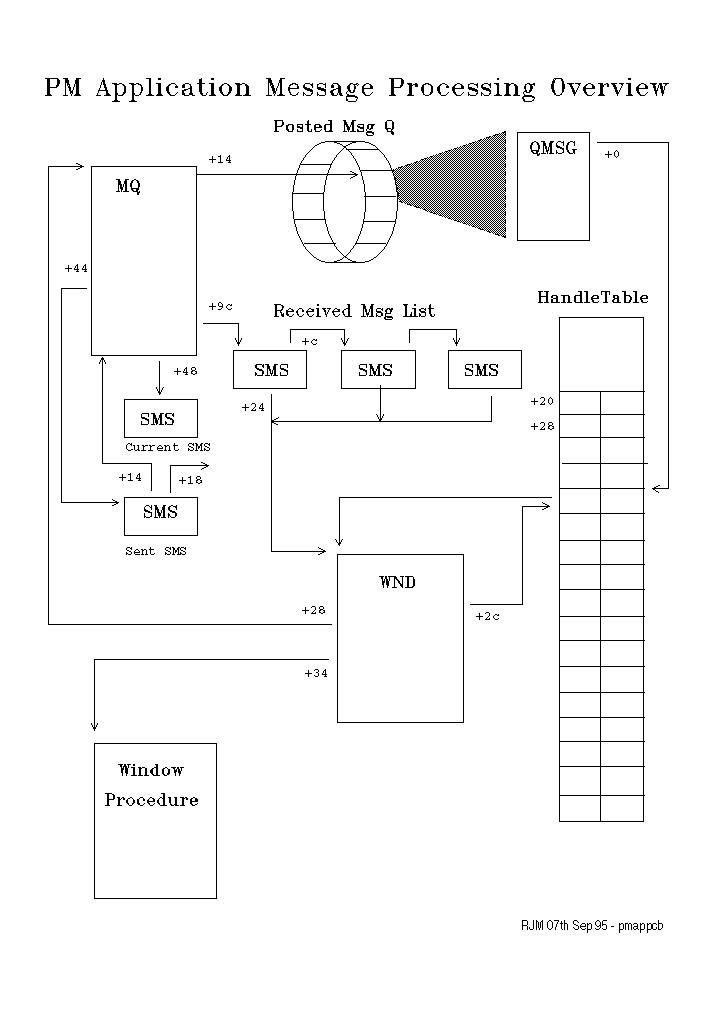Offset
+0x14
The current read position of the message queue.
Since the message queue is a circular array, four pointers have to be maintained:
the current read position, current write position, top and bottom of array.
Each queue entry is a QMSG structure.
Entries are added to the queue in increasing address order, until the maximum
(bottom) is reached then entries are added from the top.
Removal of entries only involves updating the current read pointer. Thus,
a small trace of past message activity may be seen by scanning backwards
from the current read pointer to the current write pointer.
+0x18
The current write pointer.
+0x24
The Pid of the message
thread to which this MQ belongs.
+0x28
The
Tid of the message thread to which this MQ
belongs.
+0x44
The
most recent SMS on which a response is awaited.
The presence of a non-zero value in this field implies that the message
thread is currently blocked in WinSendMsg waiting for a response.
If the message thread recurses, for example through the receipt of a synchronous
message, then a subsequent WinSendMsg will cause this field to be
updated. The previous contents are saved on the stack.
A non-zero value in this field is of prime interest when diagnosing hangs.
It immediately focuses our attention on the recipient of this message.
+0x48
The current SMS received.
This field is non-zero when an SMS is removed from the receive list
for processing by its associated window procedure.
When this field is non-zero, it implies that the thread's window procedure
has been dispatched to process a received message.
+09c
The Received message list.
SMSs are chained from this location pending dispatch.
Upon dispatch the oldest message is removed from the list and pointed to
from offset +0x48 of the MQ.
+0xa4
The Send Message Structure (SMS)
The
SMS is created for synchronous messages and linked to the receive
list (MQ+0x9c) when WinSendMsg is called.
The principle fields of interest are:
Offset
+0c
Pointer to the next (more recent) SMS in
the receive list.
+14
Pointer
to the MQ to which this SMS has been sent.
+18
Pointer to the MQ of the thread from which
this SMS was sent.
+24
Pointer
to the WND the represents the Window to which this message has been
sent.
+28
+2c
+30
Offsets +0x14 and +0x18 are of prime interest in
diagnosing hangs. They enable us to locate the recipient of a message, of
which a response is pending and therefore the thread which is causing our
thread to remain blocked.
The Queue Message
Structure (QMSG)
This is the structure
used by applications when calling WinDispatchMsg.
The QMSG is also the form of an entry on the application's message
queue.
The principle fields of interest are:
